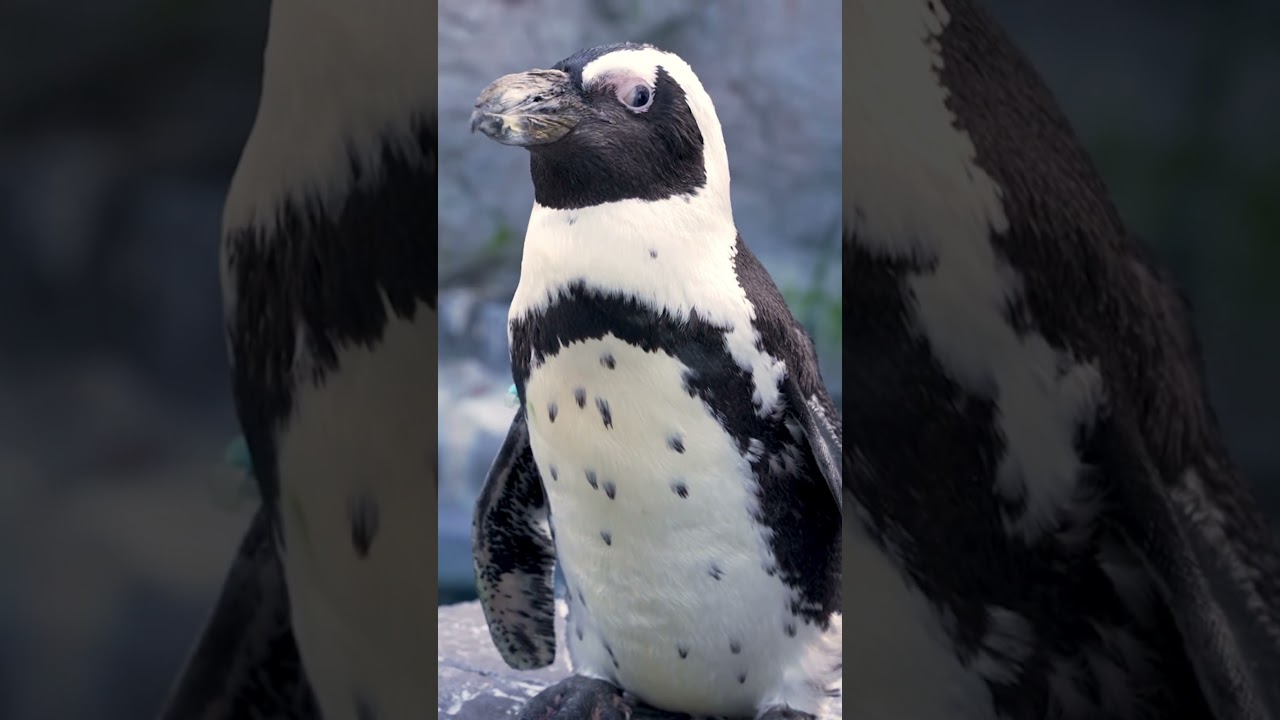– The African penguin‘s feather pattern is as unique as a human fingerprint
– African penguins are also known as jackass penguins due to their distinctive braying sound
– These penguins are facing threats to their survival, and conservation efforts are in place to protect them
Have you ever looked at a penguin and marveled at the intricacy of their black and white feathers? Did you know that the feather pattern of an African penguin is as unique as a human fingerprint? These fascinating creatures, also known as jackass penguins for their distinctive braying sound, are a sight to behold. In this article, we will delve into African penguins’ unique and fascinating aspects, from their physical characteristics to the conservation efforts aimed at protecting them.
The African penguin, scientifically known as Spheniscus demersus, is a species of penguin that is native to the waters of southern Africa. They are easily recognizable by their black and white plumage, with a black stripe and chest spots resembling a horseshoe. Each penguin has a distinct pattern of spots, making their feathering unique to them – much like a human fingerprint. This makes it possible for researchers to identify individual penguins and track their movements and behaviors.
In addition to their unique feather patterns, African penguins are also known for their distinctive braying sound, resembling a donkey’s braying. This is how they earned the nickname “jackass penguins.” This vocalization is used for communication within the colony, helping them to locate their mate and chicks among the vast colonies where they nest.
These fascinating creatures are highly social animals, forming large colonies along southern Africa’s rocky shores and islands. They are highly adaptable to their environment, often nesting in burrows or sheltered areas to protect their eggs and chicks from predators and the harsh sun. Despite their adaptability, African penguins face threats to survival, primarily due to human activities.
One of the major threats to African penguins is overfishing, which reduces the availability of their primary food source – small fish like sardines and anchovies. Climate change also poses a threat, as rising sea temperatures can negatively impact their food supply and nesting habitats. Oil spills and pollution further endanger their populations, leading to a decline in numbers over the years.
Conservation efforts have been put in place to protect African penguins and ensure their survival for future generations. These efforts include the establishment of marine protected areas to safeguard their feeding grounds, as well as the rescue and rehabilitation of oiled and injured penguins. Organizations and individuals are also working together to raise awareness about the plight of African penguins and promote responsible fishing practices to support their conservation.
One such organization is the Southern African Foundation for the Conservation of Coastal Birds (SANCCOB), which is dedicated to rescuing, rehabilitating, and releasing seabirds, including African penguins. They tirelessly care for oiled, injured, and abandoned penguins, providing the necessary medical treatment and support to return them to the wild.
In addition to conservation efforts, ecotourism plays a significant role in supporting the protection of African penguins. Visitors to the region can take guided tours to view penguin colonies in their natural habitat, which provides educational opportunities, contributes to the local economy, and promotes the value of wildlife conservation.
The story of the African penguin reminds us of the importance of preserving our natural world and the incredible diversity of life that inhabits it. By learning about these fascinating creatures and supporting conservation efforts, we can all play a part in protecting the future of African penguins and other wildlife species.
In conclusion, African penguins are unique and fascinating creatures, from their distinctive feather patterns to their playful and social behavior. Their conservation is vital to maintaining the balance of the marine ecosystem and preserving their iconic presence along the southern African coast. By coming together to support their protection, we can ensure that future generations can witness the wonder of these incredible birds in the wild. So, the next time you see a penguin, take a moment to appreciate the beauty and complexity of nature’s designs and remember the importance of our collective efforts in safeguarding their future.
*****
Source Description

